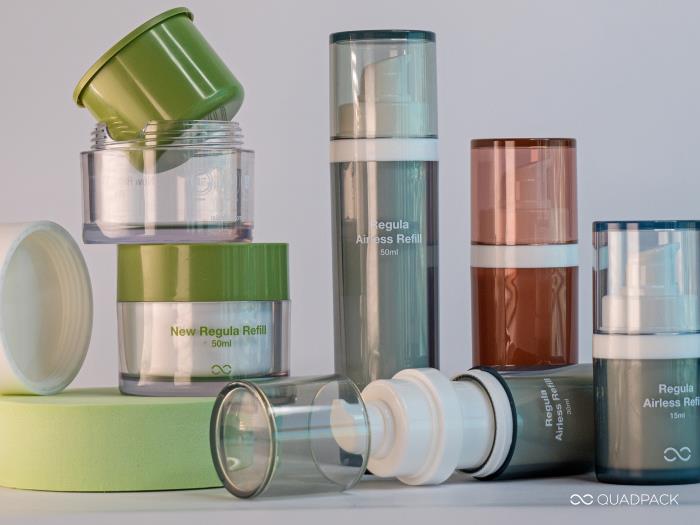Understanding the EU Packaging and Packaging Waste Regulation proposal
Susanna Casanovas, Waste Service Manager at Anthesis Lavola, helps navigate the measures and objectives of the European Commission’s proposed regulation
Packaging waste in Europe continues to grow, despite an increase in recycling. The past decade alone has seen a surge of over 20%, particularly from single-use packaging¹. A big part of the problem is an excessive and inefficient use of packaging. There is more non-recyclable packaging and a lack of recycled content, while confusing labelling complicates sorting for consumers. The proposed EU Packaging and Packaging Waste Regulation (PPWR) looks to address all these issues, but how will it affect brands and packagers? Susanna Casanovas, Waste Service Manager from Quadpack’s sustainability partner Anthesis Lavola, answers some key questions.
What is the EU PPWR and what are its objectives?
The EU PPWR is a fundamental pillar of the Circular Economy Action Plan of the European Green Deal. It is a proposal which was published on 30 November 2022 and is likely to be enacted by the end of 2024. It sets out measures to achieve a number of objectives, including the following:
• To prevent and reduce packaging waste, by restricting unnecessary packaging and obliging companies to use reuse or refill systems where possible.
• To make all packaging in the EU recyclable in an economically viable way by 2030, establishing package design criteria and mandatory deposit and return schemes, and labelling packaging with standardised symbols for recycling.
• To safely increase the use of recycled plastics in packaging, with mandatory percentages for new plastic packaging.
Will the EU PPWR be the same for every EU country?
Being a regulation, this is a mandatory provision for all Member States, which comes into force on publication in the Official Journal of the European Union. Its purpose is to standardise the application of the rules and to avoid the regulatory differences that currently exist between the different EU countries. Member States can supplement it, however.
How will packaging manufacturers be affected?
Packaging manufacturers must comply with ‘sustainability requirements’ relating to materials, recyclability, recycled content, minimal packaging content, reusability and compostability. One example affecting the cosmetics industry is the minimisation of empty space in packaging.
A pack’s compliance must be proven before it enters the market. Packaging must also carry labels with information on materials, reusability and recycled content, along with a QR code or other digital support. The Commission will establish a standardised labelling system for both packaging and waste containers, as well as a methodology for the identification of material composition.
And companies who use plastic packaging for their products?
Packaging companies will be affected by Extended Producer Responsibility (EPR) obligations and requirements for sustainability, labelling, marking and information.
The PPWR regulates some aspects of the EPR schemes to prevent market distortions and obstacles to free trade, including those relating to harmonised data communication. It also establishes a common EU framework for packaging collection, deposit and return systems, and for reuse systems, creating a level playing field for companies operating in their respective markets.
To help monitor EPR at country level, a registration requirement is proposed for economic operators (producers) when launching a pack into a Member State market. In addition, under the EPR schemes, producers’ fees will vary according to the recyclability of the packaging, with increasing thresholds applied from 2035.
What investment will be required?
We are looking at business transformation at strategic level, so there is no single investment. The cost will depend largely on the industry and the commitments already adopted. Producers of single-use packaging will be most affected. The green transition will pay back, too. Studies carried out by the Commission predict that the proposed measures will bring predictability and legal certainty, facilitate technological progress and reduce costs through more coherent rules within the EU.
Are there any incentives for the use of biobased materials?
The EU policy framework on biobased, biodegradable and compostable plastics, published in November 2022, aims to improve understanding of these materials and to clarify whether they can bring real environmental benefits. In general, the initiative encourages greater circularity of plastics from all types of raw materials, so there is no incentive for biobased plastics in particular. Instead, it helps formulate eco-design requirements for sustainable products, such as the correct use and disposal of biodegradable and compostable plastics and the conditions for biodegradation.
How much time will companies have to adapt?
At the moment, the EU PPWR is only a proposal, with objectives set mainly for 2030 and 2040. However, affected sectors are requesting a progressive and flexible implementation. Intense and effective collaboration is essential across the value chain and public administrations, to deploy the necessary tools and infrastructure.

